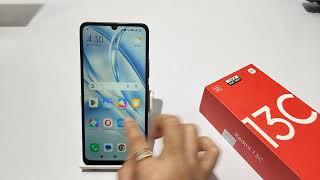
How LoRa Modulation really works - long range communication using chirps
Комментарии:

Which modulation scheme should I cover next? 🤔
Ответить
Super explanation, many thanks!
Ответить
what are the situations where higher spreading factor is better and what are the situations where lower spreading factor is better?
Ответить
Truly wonderful and comprehensive explanation. Thanks a lot!
Ответить
Very good
I went code in the matlab
Help me

Does this mean that LoRa is resistant to jamming? Would jamming be a type of noise?
Ответить
This is the fourth time I've seen this video. It covers everything I knew about LoRa modulation. Only the MatLab code is very important to me for educational reasons.
Ответить
I'm currently taking a comms course and this perfectly lines up with what we are learning in the class. Do you have another resource covering that FFT trick they did to get the correlation?
Ответить
Great Video! Thanks so much!
Ответить
❤🎉
Ответить
"Spreading factor is between 7 and 12 in Lora"
Fascinating, I'll be sure to let her know.

On the ultra short waves the bottleneck for the range is line of sight. Why there is no possibility to establish lora on lower bands where ranges me be huge?
Ответить
You’ve just gained 36 dB!
I was used to think that 10dB S/N was the limit, it seemed that your -20dB had the wrong sign but no, as you explained.
Imagine trying to talk across a room filled with 100 people talking together, and still understanding what you say.
But wait... it's ok for noise, but LoRa could have a hard time to compete if several transmitters were running at the same time.
Maybe change frequencies and symbol duration could solve the issue.

Me, who just discovered Lora exists (guess a new communication standard) without radioelectronics or math education: Yeah, those equations look just right, how didn't i think of this trick and FFT! %-)
Ответить
@1.40 The diagram seems to indicatr frequency shift keying not phase shift keying
Ответить
how does it differ from radio communication?
Ответить
at the begining: yes its complicated, but i get it.
halfway thru the video: ok i dont understand anything anymore.

It is traditional to modulate a signal with a carrier that is many times the frequency of the signal. If you were interested in doing the reverse and wanted to swap the carrier to be (for example 30MHz) and the signal to have a frequency of many times the carrier (for example 30GHz), how would you go about doing that and what modulation scheme would you propose?
Ответить
This video really explains not only LoRa protocol. But Modulation/Demodulation process in general. Nice!
Ответить
Great Vid! Although I mostly forgot university maths, I got to understand the principle of spreading factor and symbols on LORA.
Ответить
Absolutely nailed it!!!!!!!
Ответить
clear all
% Parameters
SF = 7 ; %spreading factor
BW = 1000; %Bandwidth
Fs = 1000; % Sampling frequency (Hz)
S=33; %send symbol
SNR=-10;
%t = 0:1/fs:1; % Time vector (0 to 1 second)
%f0 = 100; % Starting frequency (Hz)
%f1 = 400; % Ending frequency (Hz)
% Generate a data symbol
num_samples=(2^SF)*Fs/BW;
K=S;
lora_symbol=zeros(1, num_samples);
for n=1:num_samples
if K>= (2^SF)
K=K-2^SF;
end
K=K+1;
lora_symbol(n)= (1/(sqrt(2^SF)))*exp(1i*2*pi*(K)*(K/(2^SF*2)));
end
for j=1:100
%Add noise
lora_symbol_noisy = awgn(lora_symbol, SNR, 'measured');
%Transmit
%Receiver below
%-------------Generate the base down chirp--------
base_down_chirp = zeros(1,num_samples);
K=0;
for n=1:num_samples
if K>= (2^SF)
K=K-2^SF;
end
K=K+1;
base_down_chirp(n) = (1/(sqrt(2^SF)))*exp(-1i*2*pi*(K)*(K/(2^SF*2)));
end
dechirped = lora_symbol_noisy.*(base_down_chirp);
corrs = (abs(fft(dechirped)).^2);
plot(corrs)
[~, ind] = max(corrs);
ind2(j) = ind;
pause(0.01)
end
histogram(ind2, 2^SF)
symbol_error_rate = sum(ind2~=s+1)/j;
%spectogram(lora_symbol)

Excellent video mate, cheers for that! Good to see matlab getting used as well, it is invaluable in so many ways.
Ответить
amazing video, thank you sir
Ответить
you deserve more subs and viewers
Ответить
Wow - great explanation - usually there are 3 features but youre only allowed 2 of them - here you can choose 3 simultanously :) Low Bitrate, Low Power and Long Range :) - great idea :)))
Ответить
This is a really good video you did explaining LoRa "mathematics', i.e. the magic of decoding a symbol where signal is less than noise i.e. SNR negative 8-) and the Matlab code is really useful. Thank you!
Ответить
This is what I call well-balanced video making and editing: normal transitions, clear presentation, voice level fairly constant, background tune merely present and allows or even helps one to get immersed in the topic without being disturbed either by its loudness or a crappy tune choice.
Your explanation is pretty good and shows you have a good understanding of the principles, but math is my weak side so I mostly skip over calculus and differential equations.

I’m a ham operator. I setup a LoRa base station using the lora ham shield that runs on top of an arduino. With that arduino plugged into my raspberry pi at home, and another arduino with lora hsm shield running in my car. I was able to TX/RX short text messages first try back/forth about 9 miles apart. This was at only 1 watt or less power output, on 440 mhz. I was dumbfounded. It took some pass band filters, and good antennas, but still… Able to communicate well beyond any voice, digital voice, or digital modes on UHF from a very tough location to another, separated by multiple freeways, high rise buildings, trees, cars, etc, etc…
Ответить
What a great video and details explanation!
That helps me a lot with my project in LoRa IoT!
Thank you very much!

Good video, but I don't quite understand why increasing the symbol duration gives better performance with lower SNR? Could someone please explain this?
Ответить
Really good explanation
Ответить
Wow beautiful! From a new modulation concept with a complex maths expressions to a smart way of computational representation, that’s incredible! Cannot imagine how people invented this smart are!
Ответить
Great video. Thank you.
Ответить
Well done. It would be interesting to add information about the bandwidth of the signal vs SF. This relates directly to the received noise and hence the S/N ratio. This will perhaps also shed a light on your question how far one can go by increasing the SF.
Ответить
Brilliant explanation. Thank you
Ответить
Thanks...
Ответить
But do you really want to build a tracking grid.
Ответить
Awesome explanation, thanks!
Ответить
This video is simply unbelievable, very clever explanation!
Ответить
Thanks
Ответить
Perfect video. It's like a missed Digital Communications lecture that I finally found. Thank you.
Ответить
Excellent ! Really helped me to grasp the intution about LoRa !
Ответить
Many thanks for posting this video. I had no idea how LoRa worked beforehand but your video clearly explained it. It took a while to figure out how convert your Matlab code into Octave code and correct my typos. But the final result worked exactly like your demo showed.
Ответить
the best
Ответить
May I ask which tool or video method do you use to simulate the explanations, like 3.05, 4.07, 6.20 and similar ones ? Thanks, regards
Ответить
YOU ARE GREAT !!!
Ответить
matlab file please
Ответить
Hello, how can I access the Matlab codes?
Graduate student


























